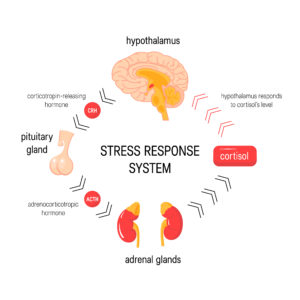We all experience dealing with difficult people at times. Ok, maybe more like every day. Some we seriously want to punch in the throat. These are the types of individuals who are seemingly always working to get under our skin. Like it or not, dealing with difficult people has real-world consequences for our health, our psychological safety, and our performance. However, using a Behavioral Intelligence approach can give you a better way to handle these wretched scoundrels.
What is Behavioral Intelligence?
Let’s start by defining our model. Behavioral Intelligence is the skills and abilities to accurately explain existing behavior, predict future behaviors, influence other people’s behavior, and control your own behavior. Behavior is the root of all success and failure in life. Thankfully, our behavior is a choice. We may not be able to control our feelings and emotions, but we can choose how we respond to situations and how we react to these internal impulses. With this in mind, let’s explore some strategies for dealing with difficult people.
This is NOT the Hill I Want to Die On.
First and foremost remember, “It’s your heart attack.” When you are dealing with difficult people, your limbic system ignites, dumping cortisol and adrenaline into your body. These stress hormones can be toxic if prolonged. This is why we need to use the “control” aspect of Behavioral Intelligence. Ask yourself, “Is this the hill I want to die on?” Most of the time, the answer should probably be no. Why? Because someone else’s terrible behavior should not be the cause of your heart attack.
Avoid Labels When Dealing with Difficult People
 Separate the “person” from the behavior. We have a tendency to apply labels, which denote a sense of permanency. Bill is a jerk. Shauna is greedy. Note the word, “is.” This pre-supposes that Bill and Shauna are naturally this way and cannot change. They just “are” that way. While it may be convenient to think so, it is an explanation that ignores the fact that behaviors are learned, and that they can be unlearned.
Separate the “person” from the behavior. We have a tendency to apply labels, which denote a sense of permanency. Bill is a jerk. Shauna is greedy. Note the word, “is.” This pre-supposes that Bill and Shauna are naturally this way and cannot change. They just “are” that way. While it may be convenient to think so, it is an explanation that ignores the fact that behaviors are learned, and that they can be unlearned.
Instead of applying labels, try to approach this by calling out the behavior specifically. “Bill yells at the employees when he is stressed.” “Shauna takes more than her rightful share of office supplies.” Removing the label re-introduces the fact that Bill and Shauna are choosing to behave in ways that are antisocial. By that rationale, they can also choose not to engage in those behaviors. Now we can work to influence their behavior to be less difficult.
Have a Difficult Conversation with Difficult People
One method to influence behavior is to address it directly. Terrifying, right? While this may result in a difficult conversation it’s worth it because remember, it’s your heart attack. Think of the cost of not addressing the behavior; stress, anxiety, frustration, and anger take a heavy toll on your mental and emotional well being. Directly addressing the issue is one method to resolve the conflict. You can check out our blog on body language and relationship building for tactics to help you navigate the encounter.
Employ Cognitive Empathy
Another method to influence behavior is to employ a cognitive empathy approach. This includes utilizing tools such as acknowledgment, flattery, and calibrating questions.
Acknowledgment helps to disarm the defense mechanisms of the difficult person. For example, “I can understand why you yell when your frustrated, if I had those feelings, I might want to yell too.” This helps the difficult person to feel understood. If they feel that you understand them, they are more likely to be influenced by you.
By flattery, I am not suggesting saying something like, “your ass looks great in those jeans. See our articles on sexual harassment. I am more speaking of employing strategies such as the Benjamin Franklin Effect. Not only will you enjoy the benefits of flattering someone by showing an interest in their interest, but also create a cognitive dissonance that will further give you the opportunity to influence.
Calibrated questions allow for the difficult person to solve the problem. These questions begin with “how” and “what.” For example, “How might we look to reducing your frustrations in the future?” “What would it take to feel more secure in the resources that are provided?” These evoke rational thinking and eliminate the possibility of short “yes” or “no” answers.
Find your Zen When Dealing with Difficult People

We cannot control other people; we can only control our own behaviors. To do so requires an ability to stay calm and focused even in the midst of conflict. Here are two strategies that we learned in kindergarten that are shown by neuroscience to be effective in reducing our limbic threat response. Take a deep breath and count to ten.
Taking a deep breath floods our blood with oxygen and tells our limbic to relax. After all, you would not be taking calming deep breaths if you were running from a lion, would you? This active approach signals to your system that the perceived threat is not a cause for survival concerned responses.
Counting to 10 gives you a small break from the situation, which then allows your rational thinking to override the limbic response. This can be executed by taking a short break if in conflict. Both strategies can help us manage our own threat response system, think more clearly, and often can stop us from saying something we will regret.
Conclusion
These strategies are just a few that encompass a Behavioral Intelligence approach to dealing with difficult people. In the most extreme cases where people are completely toxic and seemingly unmanageable, it may be the best strategy to remove yourself from the situation. A future blog post will cover dealing with toxic people, but for now, I hope this helps you to deal with that pesky colleague that drives you nuts. Remember, it’s your heart attack. Using a Behavioral Intelligence-based approach will help you control your own reactions to these difficult people. You are worth it.
You can learn more about dealing with difficult people by watching my TEDx talk on the subject below. Interested in an exhilarating keynote, coaching, or training in dealing with difficult people?
Contact us today for a free quote!
Written by Jay Johnson, CEO at Coeus Creative Group. Connect with Jay on LinkedIn
